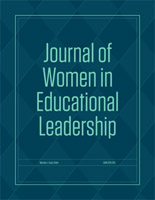Educational Administration, Department of

Journal of Women in Educational Leadership
Date of this Version
4-2003
Document Type
Article
Citation
Journal of Women in Educational Leadership, Vol. 1, No. 2-April 2003 ISSN: 1541-6224
Abstract
Studies of women note the unique nature of female leadership (Aburdene & Naisbitt, 1992; Helgeson, 1995; Sergiovanni, 1995). As women's leadership roles in the workforce increase (Helgeson, 1995; Ruderman & Ohlott, 2002), the potential for women's leadership in philanthropy is acknowledged. In Reinventing Fundraising: Realizing the Potential o/Women 's Philanthropy, Shaw and Taylor address the potential of women philanthropists-and make special note that, whether women inherit, earn or marry money, they are becoming a powerful financial force. Lederer (1991) and Taylor (1998) emphasized that American women now control 60% of the nation's investment wealth and constitute 43% of the nation's wealthiest individuals. Some of these women are using their financial resources to exert an influence on society. Furthermore, while women are building fortunes and developing financial skills, they "have not forsaken their commitment to a better world, and some have taken the lead in transforming philanthropy" (Shaw & Taylor, 1995, p. 3).


Comments
© 2003 Pro>Active Publications